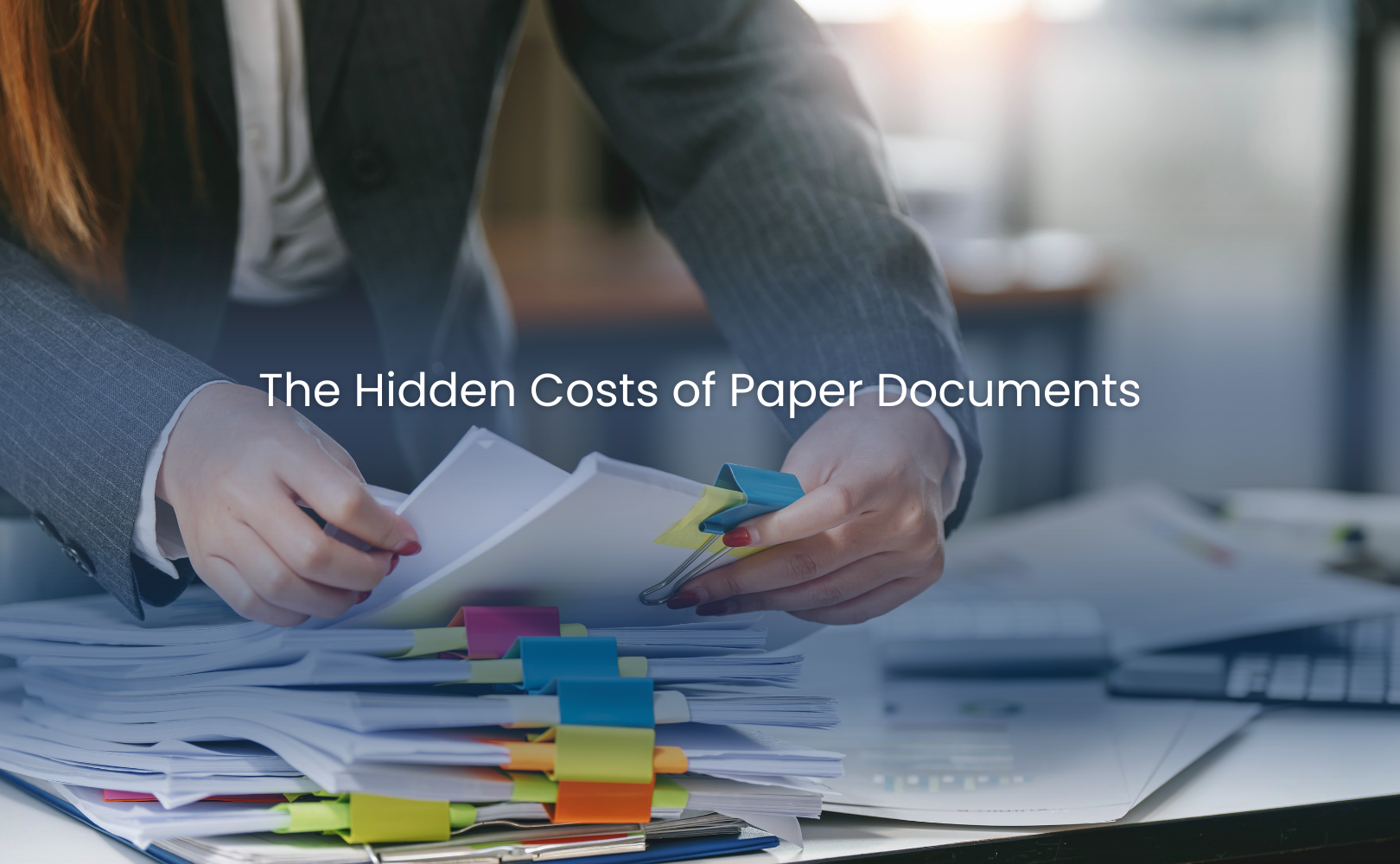Discover the hidden costs of paper document management-from storage and security vulnerabilities to wasted time-and understand how digital document management can save money, time, and resources.
Introduction
On the surface, paper documents appear to be inexpensive: print, file, store. But they have hidden expenses that silently suck a company’s time, money, and productivity away. From printing and storage costs to lost file risk and compliance issues, paper processes end up costing a lot more than they appear to.
This article examines the true expenses of paper documents and provides guidance on how to steer clear of them using wiser, digital solutions.
1. The Cost of Paper and Stationery Can Add Up
Every document has a cost associated with it, specifically the costs of printing, ink, and upkeep. We’d like to think the use of paper in an office is limited to paper, separations folders, and filing cabinets. An office can sometimes spend thousands of dollars in hidden costs every year on paper and stationery.
Electronic Solution: You can eliminate the cost of printing altogether by implementing an Electronic Document Management System (eDMS). Beyond the cost of the supplies you save, your printers and other hardware last a long time without having to be replaced.
2. Space Isn’t Free
Your filing cabinets, shelves, and stockrooms are using space in your office that could otherwise be used for work, productivity, or to fulfill your growth strategy. Even off-site storage services are charges you incur monthly that will keep growing as you keep growing your documents.
Electronic Solution: By storing your documents in the Cloud, you are able to safely and securely have unlimited storage, all on-line, and without taking physical space in your office.
3. Time is Wasted Looking For Files
The amount of time all staff members and especially administrators consume looking for documents can add up to hours every week, either riffling through filing cabinets or piles of paper. Lost or misplaced documents chew up even more time, frustrate the staff involved, and are unproductive activities.
Electronic Solution: With an index and a repository of electronic documents, filing and retrieving documents is achieved in just a couple clicks in a matter of seconds.
4. Security Threats and Data Leakage
Paper records are vulnerable to theft, loss, or unauthorized access. Sensitive records may be lost or even destroyed in cases of fire and water damage, exposing businesses to legal and financial jeopardy.
Electronic Solution: An eDMS provides password protection, access control, and encryption, making sure that only approved users get to view sensitive information.
5. Compliance Challenges
Many industries have strict rules for record-keeping and data protection. Relying on paper raises the chance of mistakes, incomplete records, and costly non-compliance penalties.
Digital solution: Digital systems simplify compliance with audit trails, automatic backups, and retention policies.
6. Impact on the Environment
Processes using paper cause deforestation and waste, making sustainability a challenge. Growing numbers of businesses are scrutinized based on their environmentally friendly initiatives to make room for green initiatives.
Digital Solution: Going paperless is a key to lower carbon foot print and creating a more sustainable and environmentally friendly business model.
Conclusion
The hidden costs of poor document management are significant, from wasted time to compliance penalties and lost revenue. Implementing a Document Management System addresses these issues by centralizing files, automating workflows, improving compliance, and enabling smarter collaboration.
Ready to cut costs and improve efficiency in your organization? Discover how My eOffice eDMS can help your business build a secure, organized, and future-ready digital ecosystem.




